How fast does a gyrocopter fly? Gyrocopters, also known as gyroplanes, are a unique type of aircraft that offer a thrilling flying experience. The aircraft can reach a maximum speed of 150-mph and 140-mph cruising speed.
The speed capabilities of these aircraft have always been a topic of interest, as gyrocopters have the ability to fly at impressive velocities. This article have more details about gyrocopter and how to get one.
Contents
So, how fast does a gyrocopter fly? The answer to this question depends on various factors that affect the velocity of the aircraft.
In this article, we will explore these factors and provide a comprehensive understanding of the speed capabilities of gyrocopters.
Understanding Gyrocopters: A Brief Overview
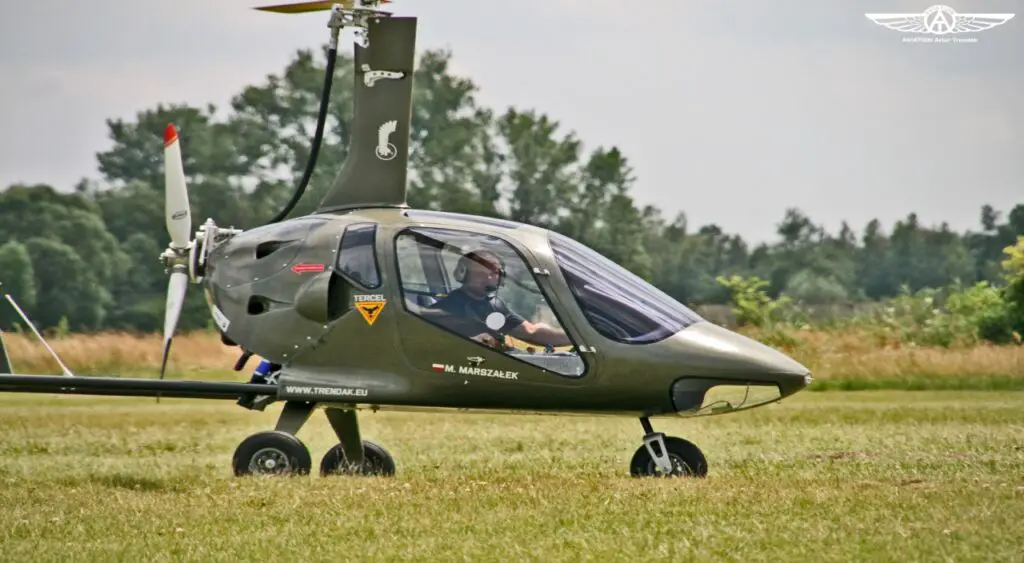
A gyrocopter, also known as a gyroplane or autogyro, is a unique type of aircraft that combines features of fixed-wing planes and helicopters.
Unlike helicopters, gyrocopters rely on an unpowered rotor to generate lift, which means that they require a runway for takeoff and landing.
The rotor is not powered but is connected to the engine through a clutch, allowing it to spin freely while the aircraft is moving.
The engine of a gyrocopter is typically located behind the cockpit and drives a propeller that provides forward thrust.
The aircraft is steered by tilting the rotor and using the rudder pedals to control the direction of the aircraft.
Gyrocopters are often compared to helicopters, but they differ in several critical ways. For example, a helicopter’s rotor is powered, while a gyrocopter’s rotor is not.
Additionally, helicopters are capable of vertical takeoff and landing, while gyrocopters require a runway for takeoff and landing.
Gyrocopters vs. Fixed-wing Aircraft
Another key difference between gyrocopters and other aircraft, such as fixed-wing planes, is their ability to fly at slow speeds.
Gyrocopters can fly as slowly as 20 mph and still maintain control, making them ideal for low and slow flying.
Fixed-wing aircraft, on the other hand, require much higher speeds to maintain lift and control. Another advantage of gyrocopters is their maneuverability.
Because of their unique design, gyrocopters are capable of performing tight turns and flying in confined spaces that would be impossible for fixed-wing aircraft.
The Role of the Rotor System
The rotor system is perhaps the most critical component of a gyrocopter. It is responsible for generating lift and providing propulsion, allowing the aircraft to take off, fly, and land.
The rotor system is made up of two or more rotors that are mounted on a mast above the cockpit. When the engine of the gyrocopter is running, it causes the rotor blades to spin.
As the blades spin, they generate lift and provide forward thrust, allowing the gyrocopter to take off and fly.
The rotor blades are not powered by the engine but instead are driven by the relative wind generated by the forward motion of the aircraft.
The Engine
The engine of a gyrocopter is responsible for providing the power necessary to drive the propeller and spin the rotor blades.
Most gyrocopters use small, lightweight engines that are capable of producing between 50 and 150 horsepower.
These engines are typically air-cooled and use either gasoline or aviation fuel. The engine is usually located behind the cockpit and is connected to the transmission via a driveshaft.
Because the engine is located behind the cockpit, it does not interfere with the pilot’s view and allows for a more streamlined design.
“Gyrocopters are often compared to helicopters, but they differ in several critical ways.”
The Influence of Rotor Systems on Gyrocopter Speed
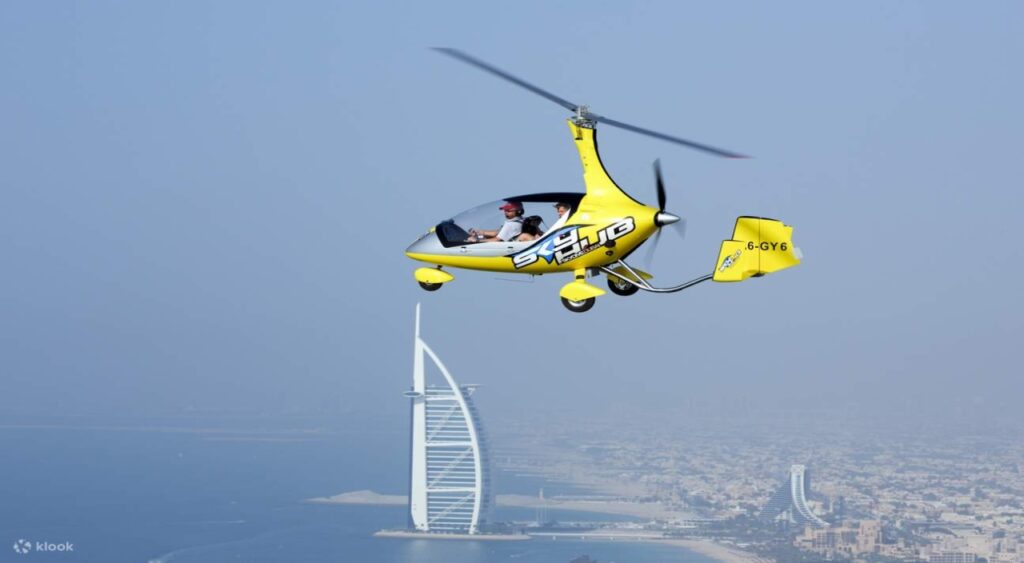
The unique design of gyrocopters relies heavily on their rotor systems to achieve lift and propulsion, making it a crucial factor in determining their speed capabilities.
Gyrocopters are sometimes referred to as autogyros, and they function differently from traditional helicopters, which use a powered rotor to generate lift and directional movement.
In contrast, gyrocopters have freely rotating rotors that turn as a result of the forward motion of the aircraft.
This is made possible by the principle of autorotation, which allows the rotor to continue spinning even if the engine fails or is turned off.
As the rotor turns, it generates lift, enabling the gyrocopter to stay airborne.
The rotor of a gyrocopter can be designed in a variety of ways, each with its own unique characteristics and impact on the flight performance of the aircraft.
For example, some gyrocopters feature helicopter-style rotors, while others use a combination of rotor and fixed wing systems. In general, the rotor system of a gyrocopter has a significant impact on its speed capabilities.
A well-designed rotor system can help to improve lift and propulsion, allowing the gyrocopter to achieve higher speeds. The rotor system also plays a critical role in the stability and maneuverability of the gyrocopter.
A poorly designed rotor system can result in decreased control and handling, making the aircraft more difficult to fly and limiting its top speed.
Depending on the type of rotor system used, gyrocopters can achieve a range of different speeds. In general, autogyros are not designed for high-speed flight and are more suited for slower, more leisurely flying.
However, some gyroplanes are capable of reaching speeds of up to 120 mph or more, making them a viable option for certain types of flight.
Factors Affecting Gyrocopter Velocity
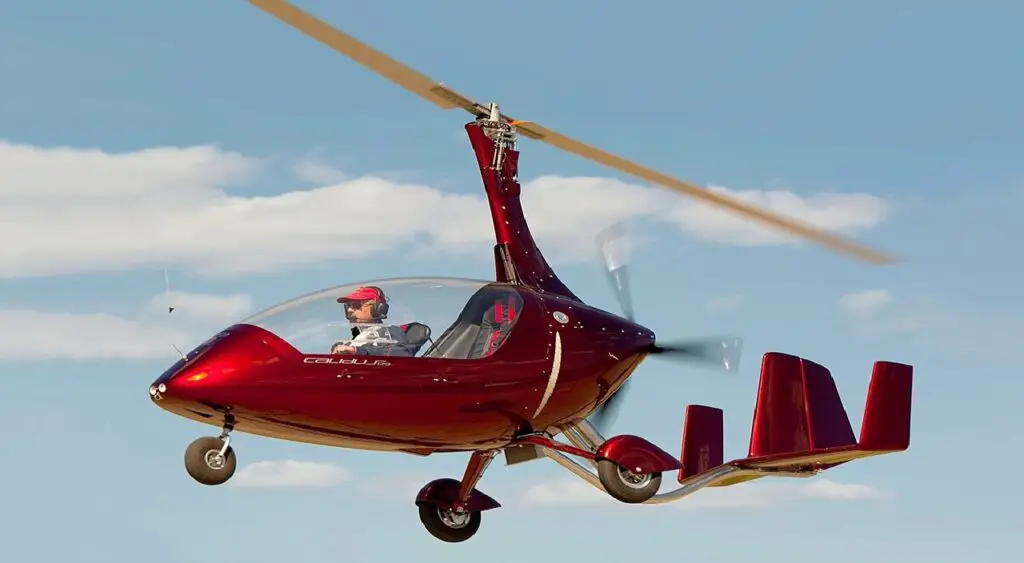
There are several important factors that can impact the velocity of a gyrocopter. These include the useful load, safety considerations, flying conditions, and landing procedures.
Useful Load: The useful load of a gyrocopter refers to the maximum weight that can be safely carried on the aircraft.
As the useful load increases, the overall weight of the gyrocopter also increases, which can impact its speed and performance.
Pilots must always adhere to weight limitations specified by the manufacturer to ensure safety and optimal performance.
Safety Considerations: Safety should always be a top consideration when operating a gyrocopter. Certain safety features, such as the use of a ballistic parachute, can add weight to the aircraft and impact its speed.
However, these safety features are vital for protecting the pilot and passengers in the event of an emergency.
Flying Conditions: The speed of a gyrocopter can also be affected by the conditions in which it is flown. Factors such as windspeed, altitude, and temperature can all impact the aircraft’s performance and velocity.
Pilots must take these factors into consideration when planning a flight and adjust their speed accordingly.
Landing Procedures: Landing a gyrocopter can also impact its velocity.
The type of surface on which the aircraft lands, as well as the technique used to slow down and come to a stop, can all impact speed. Pilots must always follow proper landing and braking procedures to ensure safe and effective landings.
“Understanding the factors that affect gyrocopter velocity is essential for safe and effective flight. By taking into consideration the useful load, safety considerations, flying conditions, and landing procedures, pilots can ensure optimal performance and maintain a safe speed throughout their flight.”
Exploring Gyrocopter Performance Specifications

Gyroplanes, also known as gyrocopters, have unique performance specifications that set them apart from traditional fixed-wing planes and helicopters.
Understanding these specifications is essential for anyone interested in flying a gyrocopter, whether for recreation or commercial purposes.
The maximum speed of a gyrocopter can vary depending on several factors, including the engine power and the weight of the aircraft.
Additionally, gyrocopters have a cruising speed that allows them to cover longer distances and achieve greater fuel efficiency.
Gyrocopter Specifications
Gyrocopters come in a range of sizes and models, each with its own performance specifications.
| Gyrocopter | Maximum Speed | Cruising Speed |
|---|---|---|
| MTO Sport | 112 mph | 93 mph |
| Cavalon | 115 mph | 100 mph |
| Cierva C.30 | 88 mph | 60 mph |
As shown in the table above, gyrocopters can achieve maximum speeds ranging from 88 to 115 mph, with cruising speeds typically around 10-20 mph slower than maximum speeds.
Gyroplane Performance
Gyrocopter performance is influenced by various factors, including the aircraft’s design, rotor system, and engine power.
Additionally, the useful load of a gyrocopter, which refers to the weight of passengers, fuel, and cargo that the aircraft can safely carry, can affect its performance and speed capabilities.
The rotor system is a crucial component of gyrocopter performance. Gyrocopters are unique in that their rotors are unpowered, meaning they rely on wind to turn the rotor blades and generate lift.
The shape and size of the rotor blades, as well as the speed and direction of the wind, can all affect the aircraft’s speed and efficiency.
Maximum Speed of a Gyrocopter
The maximum speed of a gyrocopter is determined by the power and efficiency of its engine, as well as the aerodynamic design of the aircraft.
Gyrocopters typically feature small engines that provide enough power to achieve cruising speeds but may not be sufficient for high speeds.
It’s important to note that flying a gyrocopter at its maximum speed can put the aircraft and passengers at risk, as the aerodynamic forces at play can be unpredictable and potentially dangerous.
Pilots must adhere to safe speed limits and operate within the manufacturer’s specifications to ensure safe and efficient flights.
In conclusion, gyrocopters have unique performance specifications that make them a popular choice for recreational and commercial aviation enthusiasts.
Understanding the maximum and cruising speeds of a gyrocopter, as well as the factors that influence its performance, is essential for safe and efficient flights.
The Speed Capabilities of a Gyrocopter
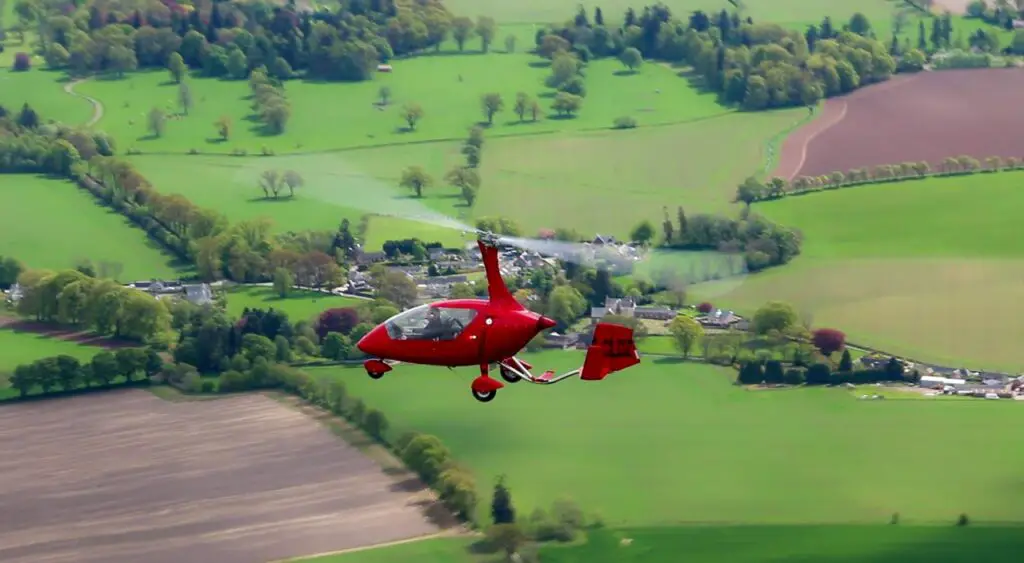
When it comes to gyrocopters, one of the most commonly asked questions is, how fast does a gyrocopter fly? The answer to this question lies in the speed capabilities of the aircraft.
Understanding gyrocopter cruising speed, gyrocopter top speed, typical gyrocopter velocity, mph of a gyrocopter, and flying speed of a gyrocopter is critical to gauging the performance of this unique aircraft.
Gyrocopter cruising speed: The cruising speed of a gyrocopter is typically between 60-80 mph. This speed is slower than most airplanes but faster than a helicopter’s typical cruising speed of 50-60 mph.
Gyrocopter top speed: The top speed of a gyrocopter varies depending on the model, engine power, and design. However, the average top speed of a gyrocopter is around 100 mph.
Typical gyrocopter velocity: In terms of typical gyrocopter velocity, the aircraft can achieve a speed of 70-90 mph.
This range is similar to the cruising speed but can vary depending on atmospheric conditions and other factors.
mph of a gyrocopter: The mph of a gyrocopter is an essential metric that pilots must be aware of to gauge the aircraft’s flight performance.
As discussed, the cruising speed of a gyrocopter is between 60-80 mph, while the top speed can reach up to 100 mph.
Flying speed of a gyrocopterIn terms of the flying speed of a gyrocopter, the aircraft can fly at a speed of around 70-90 mph at a typical altitude of 1000-2000 feet.
This speed range is ideal for short-range flights and sightseeing tours.
Overall, gyrocopters offer a unique flying experience that combines the maneuverability of a helicopter and the stability of an airplane.
The speed capabilities of gyrocopters make them ideal for a range of applications, from recreational flying to aerial photography and surveying.
Understanding Gyrocopter Flying Speeds
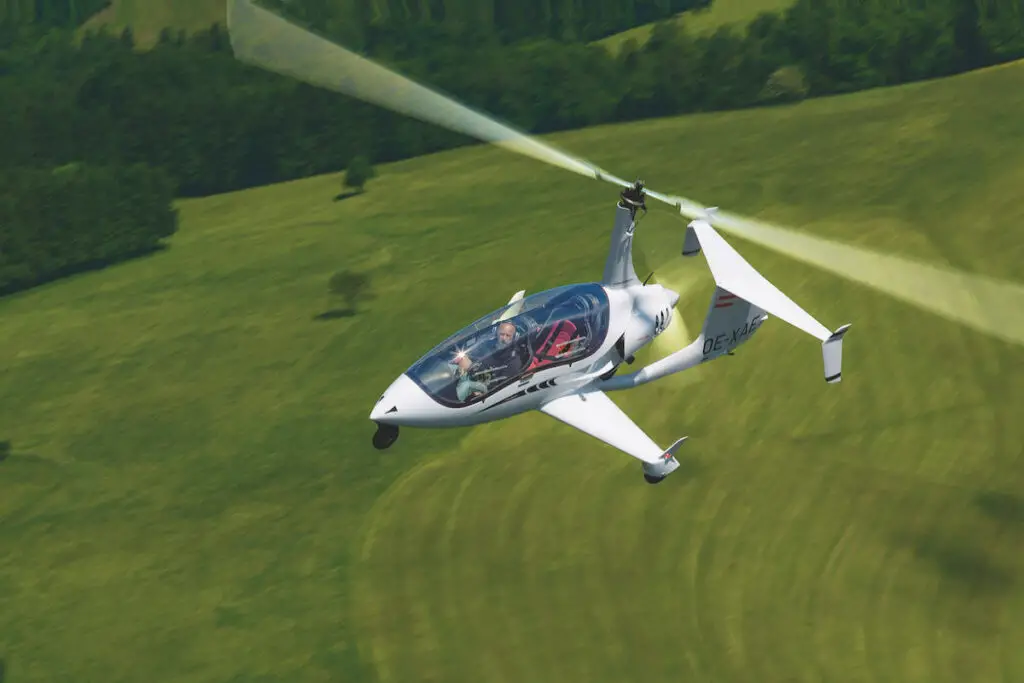
When it comes to gyrocopters, there are two main types of speed to consider: cruise speed and maximum speed.
Cruise speed refers to the typical speed at which a gyrocopter can fly for extended periods of time, while maximum speed refers to the absolute top speed that the aircraft can achieve.
So what are the typical gyrocopter flying speeds for these two types of speed? On average, gyrocopters have a cruise speed of around 70-90 miles per hour (mph) or 60-78 knots.
This speed range is ideal for extended flights, as it balances fuel efficiency and range with overall speed and performance.
However, gyrocopters can also achieve impressive maximum speeds, with some models able to reach speeds of up to 150 mph or more.
Of course, these speeds are not sustainable over long distances, but they can be useful in certain situations, such as when trying to outrun a storm or navigate through tricky terrain.
It’s important to note that gyrocopter flying speeds can vary depending on several factors, including wind conditions, the weight of the aircraft, and the skill of the pilot.
However, with proper training and maintenance, gyrocopters can provide a reliable and efficient mode of transportation for a variety of applications.
When flying a gyrocopter, it’s important to maintain the correct airspeed for optimal performance.
This means monitoring and adjusting the aircraft’s speed based on factors like altitude, wind direction, and flight conditions.
Airspeed indicators are an essential tool for tracking gyrocopter velocity, providing pilots with accurate information about their current speed and the speed range the aircraft is capable of achieving.
Overall, understanding gyrocopter flying speeds is a crucial component of safe and effective flight planning.
By knowing the typical cruise and maximum speeds of a gyrocopter, pilots can make informed decisions about the best way to fly their aircraft based on their specific needs and conditions.
Limitations and Safety Considerations in Gyrocopter Speed

While gyrocopters may offer impressive speed capabilities, it is important for pilots to understand the limitations and safety considerations associated with this innovative aircraft.
One of the most critical factors to consider is the speed capabilities of a gyrocopter.
While maximum speeds may vary based on factors such as rotor design and engine power, it is important for pilots to adhere to manufacturer specifications and operating within safe speed limits.
Going beyond the maximum speed of a gyrocopter can lead to unsafe flying conditions and potential accidents. In addition to speed limitations, there are other safety considerations to keep in mind when flying a gyrocopter.
Pilots must be aware of the impact of payload weight on gyrocopter performance, as well as the effects of wind conditions and landing procedures.
Safety should always be the top priority, and pilots should take the necessary precautions to ensure a safe and enjoyable flight.
It is also important to note that the speed capabilities of a gyrocopter may be influenced by factors beyond the pilot’s control.
For example, air traffic control regulations and weather conditions can impact the speed at which a gyrocopter can safely fly.
In summary, while gyrocopters offer an impressive range of speed capabilities, it is critical for pilots to understand the limitations and safety considerations associated with this unique aircraft.
By adhering to manufacturer specifications and taking necessary safety precautions, pilots can safely and confidently enjoy the exciting experience of flying a gyrocopter.
Other Considerations When Flying a Gyrocopter
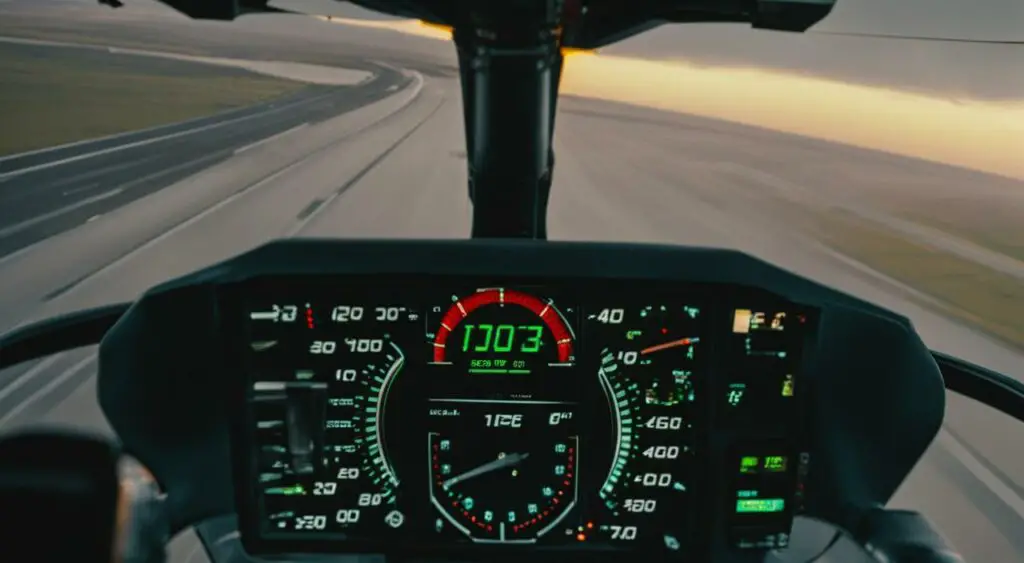
When flying a gyrocopter, understanding and maintaining the correct airspeed is critical for safety and performance. The airspeed of a gyrocopter is the velocity at which the aircraft is moving through the air.
This is different from ground speed, which takes into account the aircraft’s movement and wind conditions. Gyrocopter airspeed is influenced by various factors, including engine power, weight, and rotor speed.
Monitoring airspeed is essential to ensure that the gyrocopter remains within safe speed limits, and pilots should regularly check the airspeed indicator during flight.
It is also important to note that airspeed can vary depending on the flight conditions and altitude, so pilots should adjust their speed accordingly.
In addition to airspeed, other considerations when flying a gyrocopter include the aircraft’s design and aerodynamics.
Different gyrocopter models may have varying top speeds, and pilots should be familiar with their aircraft’s performance specifications and limitations.
“Maintaining the correct airspeed is critical for safety and performance.”
Top speed is the maximum speed that a gyrocopter can achieve. It is influenced by various factors such as rotor design, engine power, and aerodynamics.
While some gyrocopters may be capable of reaching high speeds, it is important to note that flying at maximum speed can also pose safety risks.
Additionally, payload weight and wind conditions can also affect the top speed of a gyrocopter.
Gyrocopter Airspeed vs. Top Speed
It is essential to differentiate between gyrocopter airspeed and top speed.
Airspeed is the speed at which the aircraft is moving through the air, while top speed is the maximum speed that can be achieved.
In general, gyrocopter airspeed ranges from about 40 to 90 miles per hour (mph) depending on the model and flight conditions.
On the other hand, top speeds can range from around 70 mph to over 120 mph.
Pilots should always prioritize safety over speed, and maintain a speed that is appropriate for the flight conditions and payload weight.

Conclusion
Understanding gyrocopter speed is essential for pilots and enthusiasts alike.
Gyrocopters are unique aircraft that have the ability to achieve impressive speeds while still maintaining a high level of maneuverability and safety.
Throughout this article, we have explored the various factors that influence gyrocopter velocity, from rotor systems to aerodynamics and weight.
We have also reviewed specific performance specifications and speed capabilities, giving readers a clear picture of what to expect when flying a gyrocopter.
It is important to note that while gyrocopters are capable of high speeds, pilots must always operate within safe speed limits and take into consideration all relevant safety considerations.
Additionally, monitoring and maintaining the correct airspeed is critical for achieving and maintaining top speed.
Overall, gyrocopter speed is an exciting area of study and offers an exciting opportunity for pilots and enthusiasts to experience cutting-edge aviation technology.
Whether you are interested in cruising at a leisurely pace or pushing the limits of gyrocopter flight speed, understanding the capabilities and limitations of these innovative aircraft is essential.
Thank you for reading! Fly safe and happy flying!

FAQ
-
How fast does a gyrocopter fly?
The speed of a gyrocopter can vary depending on several factors such as the design, engine power, and flight conditions. On average, gyrocopters have a cruising speed of around 60-80 miles per hour (mph) or 52-70 knots. However, some gyrocopters have been known to reach top speeds of up to 100 mph or more.
-
What is a gyrocopter?
A gyrocopter, also known as a gyroplane, is a unique type of aircraft that utilizes a rotary wing, or rotor, to generate lift. Unlike helicopters, gyrocopters have an unpowered rotor that spins freely in the air while the forward thrust is provided by a separate engine-driven propeller. This design allows gyrocopters to combine the characteristics of fixed-wing planes and helicopters.
-
How do rotor systems affect gyrocopter speed?
The rotor system plays a crucial role in determining the speed capabilities of a gyrocopter. The design and flight characteristics of the rotor can impact the lift and propulsion generated. Most gyrocopters use an autogyro or helicopter rotor system that allows for autorotation, enabling the aircraft to maintain lift even if the engine power is lost. The efficiency and performance of the rotor system directly affect the overall speed of the gyrocopter.
-
What factors affect gyrocopter velocity?
Several factors can influence the velocity of a gyrocopter. The weight of the payload carried by the aircraft can affect its speed and performance. Aerodynamic factors, such as air density, wind conditions, and the aircraft’s design, also play a role. Additionally, safety considerations, such as the need to maintain stability and control, may impact the maximum velocity achievable during flight.
-
What are the performance specifications of a gyrocopter?
Gyrocopter performance specifications can vary depending on the specific model and design. However, typical performance metrics include maximum speed, cruise speed, and useful load capacity. Manufacturers provide these specifications to give pilots and potential buyers an understanding of the capabilities and limitations of different gyrocopter models.
-
How fast can a gyrocopter fly?
Gyrocopters can achieve cruising speeds of around 60-80 mph or 52-70 knots on average. However, some gyrocopters may be capable of reaching higher speeds depending on their design and engine power. It is important to note that the actual speed achieved during flight can be influenced by various factors, including payload weight, wind conditions, and pilot skill.
-
What are gyrocopter flying speeds?
Gyrocopter flying speeds refer to the range of speeds at which a gyrocopter typically operates during different flight conditions. These speeds can vary from cruise speed, which is the speed at which the gyrocopter maintains a stable and efficient flight, to maximum speed, which represents the upper limit of the aircraft’s velocity. Understanding and operating within these speed ranges is essential for safe and effective gyrocopter flying.
-
What are the limitations and safety considerations in gyrocopter speed?
Gyrocopters, like any aircraft, have specific speed limitations that are set by the manufacturer. Operating within these limits is crucial for maintaining the safety and integrity of the aircraft. Factors such as engine power, weight, and aerodynamic characteristics of the gyrocopter can affect its speed capabilities. Pilots must adhere to these limitations and consider safety factors when determining the appropriate speed for flight.
-
What other considerations are important when flying a gyrocopter?
When flying a gyrocopter, maintaining the correct airspeed is crucial for safe and efficient operation. Pilots must be aware of the specific airspeed requirements for their gyrocopter model and adjust accordingly. Additionally, factors such as gyrocopter design, aerodynamics, and environmental conditions can impact the ability to achieve and maintain top speeds. Monitoring and understanding these considerations are essential for a successful gyrocopter flight.
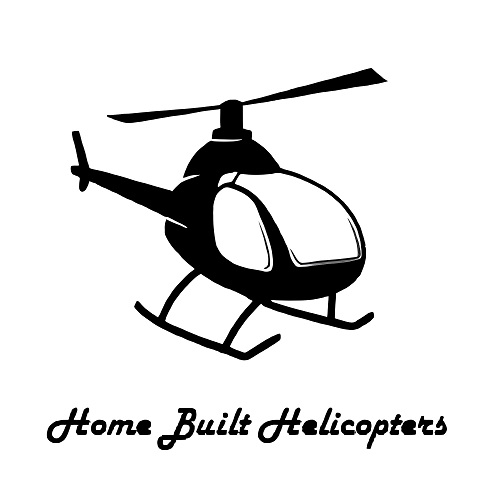
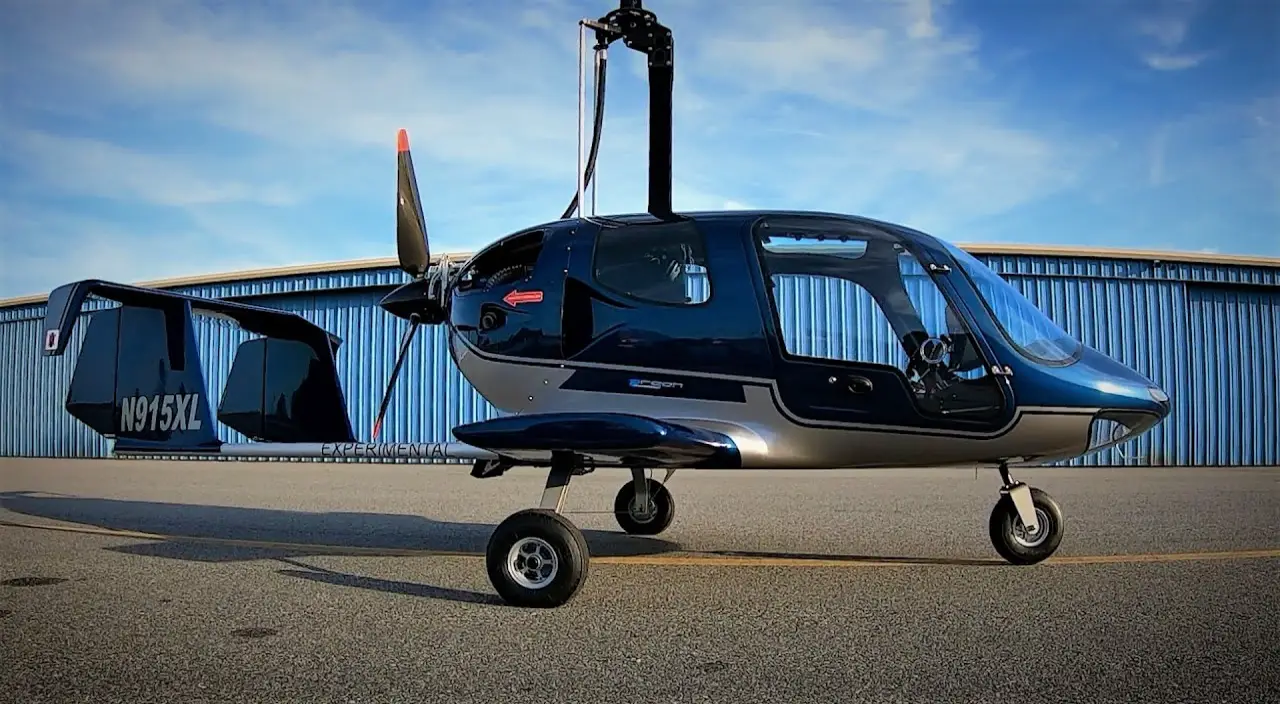
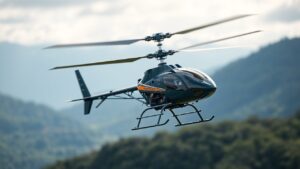

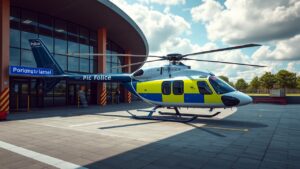
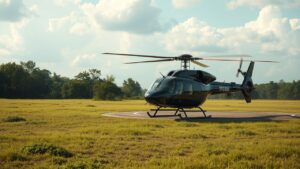
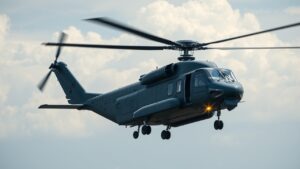

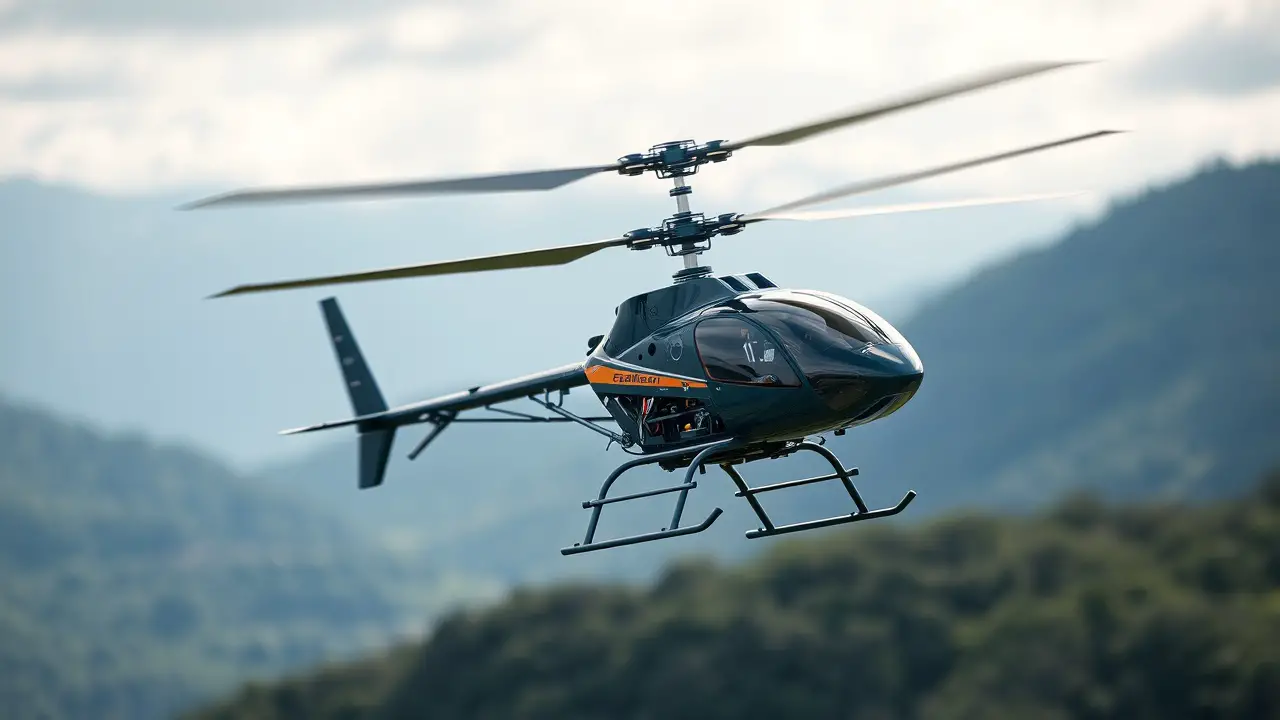


Leave a Reply